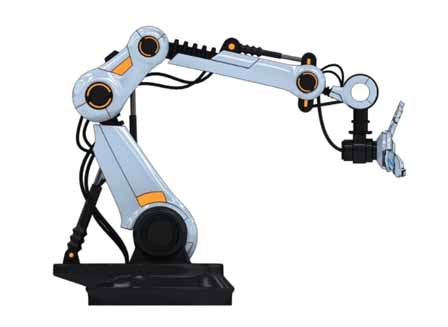
Source: Pinterest
Robots are the future and that future is already knocking. It is estimated that by the end of 2020, there will be 12 million active robotic units in the world. By 2025, global spending on robots will hit $16.5 billion. All these stats point to one fact, the pace of industrial automation and robotics has picked up and it is only a matter of time before everything is left in the hands of highly advanced robots.
So the question now is, is it okay for anyone to try to learn how to design a robotic arm and actually do it? How safe is the process? To answer these questions and more we are going to delve deep into the world of industrial robotics.
Things to Consider When Building Your Own Robot
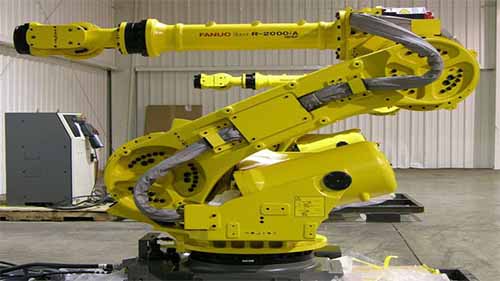
Source: Pinterest
Robots are not toys, they are very sophisticated machines that need a lot of expertise to build and operate. Before you start digging around on how to make a robotic arm at home, here are some of the things you need to keep in mind.
The Purpose
What is your endgame? What tasks do you plan to have the robot handle? There has to be a reason why you would want to create your own robotic arm and that reason will be the foundation for the blueprints you will need to start off. Everything about the robot will be hinged on the purpose from start to finish, therefore have a clear one beforehand.
The Environment
Where will the robot operate? Is it an airborne robot? A terrestrial one or will it be moving inside water? Figuring out the environment in which the robot will be operating is the second most important part. Making a decision on this early enough will impact the design, the movement, and the power needed to make it work.
The Power
What will power the robot? Will you use batteries or will you go with an in-built solar panel? Will the robot depend on direct electrical power? Every part of the robot depends on electrical power to function. Therefore, it is paramount that you nail down the source of power that the robotic arm will use. You could choose to combine all the three options but that will require more work.
The Body
Will you go with plastic or metal? How big and heavy will the robot be? There are many materials available that you can choose from to make the chassis of the robot. Each has its own weaknesses and strengths. To better navigate this section, you will have to fall back on the purpose of the robot. That will help you decide the material to go for.
Sensors
You also have to decide how the robot will be able to perceive space and judge distances. There are various robotic sensor technologies available for this and choosing the right one can be a headache. Again, this is another situation where you can refer back to the purpose of the robot to narrow down on the best program for this.
Is It Necessary for Manufacturers to Build a Robot Arm from Scratch?
The temptation to build a robot arm from scratch is something that manufacturers looking to automate their businesses grapple with every day. On one hand, there are some benefits to having something built in-house. On the other hand, there are risks involved.
The Benefits
Some of the benefits a manufacturer can get from building their own robot from scratch include the following:
Budget Control: The manufacturer presiding over the creation of an in-house industrial robot will have more control over the amount of money injected into the project. This will help them budget in advance and only get the things that are necessary without blowing funds on mundane issues.
Customized Programming: A manufacturer will be able to dictate the exact industrial robot programming technology needed to make a robot that works in a manner described by the manufacturer. It may be hard pulling this kind of thing off but having a robot that is tailor-made for the plant is the whole point of making your own robot.
No Replication: When a manufacturer funds an in-house robot building project, they get to own the rights and patents to the robot. That means that the robot and everything associated with it cannot be reproduced without the express permission of the company.
The Risks
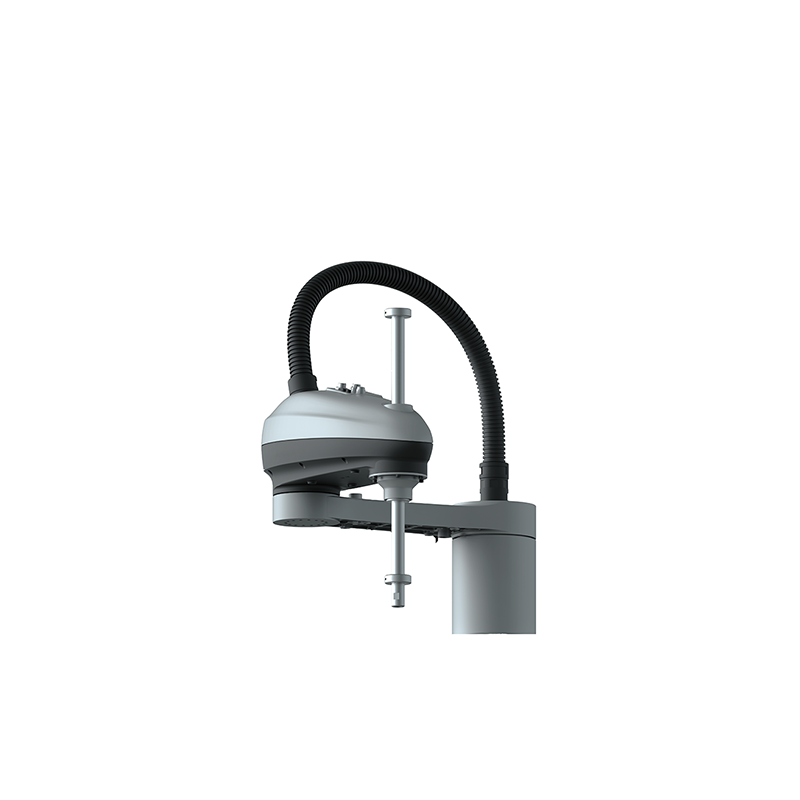
The risks associated with building a robot from scratch are many, some of the notable ones include the following;
Safety Issues: The standards and guidelines that regulate the construction of a robot are many and this is something that an in-house team cannot be able to satisfy wholly. And when these guidelines are not adhered to, then the possibility of the final product being defective and a danger to the people around increases exponentially.
Future Upgrades: Robotic programs built by experts specialized in that kind of work usually come with updates that enhance the robots later on. On the other hand, in-house robotic programs do not have that luxury, and even if they do, they are never that good. This will deny the manufacturer any chance of upgrading the robots in the future and that will be a big loss in the end.
Robustness: The main reason why a manufacturer would choose to create their own robots would be to save money. In the pursuit of this goal, important factors like functionalities take a back seat and in the long run, cheap and inferior materials are used instead. That may make short-term sense, but with time, the lack of efficiency will eventually catch up and production will suffer.
Wastage of Money: The initial cost of making your own robot may be cheap but in the long run you will end up incurring unnecessary losses if production does not hit the levels associated with an industrial robot.
Benefits of Working with a Robot Arm Manufacturer
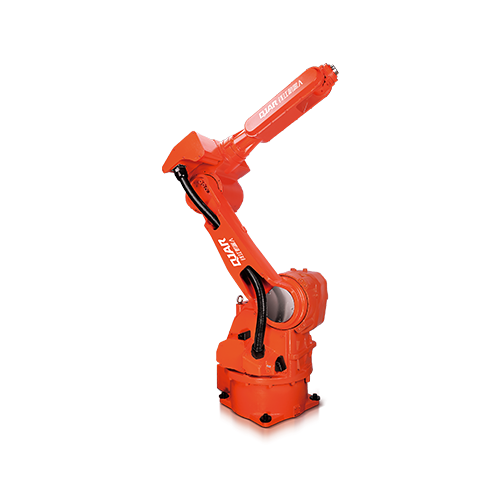
In any line of business, it always pays handsomely to deal with people who understand their work and roles. When you decide to automate your manufacturing, ensure that the robots you invest in are from robotic arm manufacturers who are good at what they do.
The benefits of working with robot manufacture include the following;
Quality Assurance
There is no second-guessing when dealing with a specialized robot arm manufacturer. Robot making companies have invested a lot in research and development for years and through trials and errors, they have been able to come up with robots that have minimal defects. You will be assured of a functioning product.
Guaranteed Warranty
Robotic equipment manufacturers always have a warranty on their products for a limited period of time that will give you sufficient window frames to find out if there are any faults. Warranties are important in business and considering how expensive robot arms are, dealing with companies that have warranties is the best way to safeguard your investments.
Customizations
Every industrial robot manufacturer offers customization services. You can have a robot made to our own specifications to handle specific tasks at your plant. These services may cost a lot but you will be assured of a functioning product at the end of the day. You can also order the robots according to your needs and the type of your production processes such as the pick and place robot or the palletizing robot arm. And what’s more, you will continue to receive software updates throughout at minimum costs.
After Sales Services
The relationship between you and the robot manufacturer does not end after the purchase of their goods and services. You will need constant updates and in case of malfunctions, they are the only ones who can figure out the problems. This continued relationship is what is called after-sales services and it involves the strengthening of relations that boost business both ways.
Bulk Purchasing
Another big advantage of dealing with robot makers is the benefit of getting discounts when you bulk buy robots. As earlier mentioned, robotic arms do not come cheap and if you can find a way to squeeze out some discount then do it. You will be killing two birds with one stone when you do bulk purchases, you will be getting a squad of robots at reduced prices compared to if you went out of your way to make one yourself.
Where You Can Find Robot Arm Manufacturers
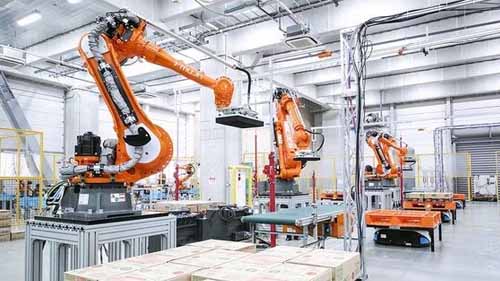
Source: Pinterest
There are many robot arm manufacturers that supply various high-speed robot arms spread out across the globe. The most notable ones include the following:
EVS: This is a China industrial robot manufacturer that specializes in the manufacturer of industrial robots like SCARA robots, Gantry Robots, Cartesian Robots and so much more. You will find most of their robotics in food industry, automotive industries, aviation, and pharmaceutical companies.
FANUC Robotics: This is the world’s top manufacturer of robot CNC machines that are used in factory automation. The robots are used for roles like pick and place automation and are easy to use. FANUC recently passed a great milestone when it recorded its 500,000th robotic unit sold since the company’s inception.
Omron Adept Technologies: Another big game player in the robotics sphere that is known for its top-of-the-range technologies that are being applied in industrial robots across the world. At the moment, Omron is one of the largest robot arm suppliers in the North American region.
ABB: The company has been around for almost 130 years and is considered to be one of the pioneers in robotics that have transformed how robots are used in our day-to-day life. ABB has branches in more than 100 countries and has so far sold over 400,000 robotic units across the globe.
Conclusion
On the question of whether it is a good idea to create your one robot from scratch, the simple answer is, do not do it. Robots are sophisticated machines whose manufacture is regulated by strict guidelines. If all you want is to make a fun robot for your own amusement, then that is okay.
But when it comes to a robot arm factory, it is best you leave the task of making a robotic arm to the experts who are good at it.
